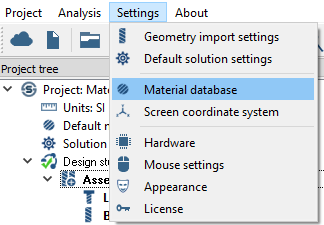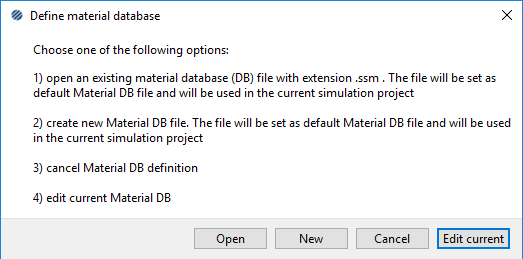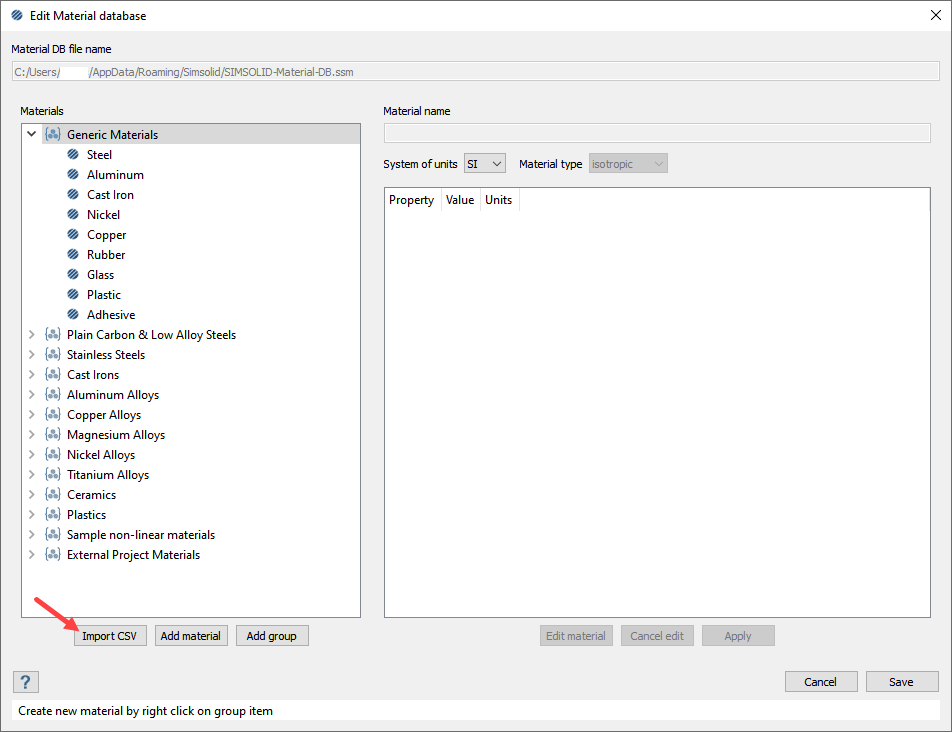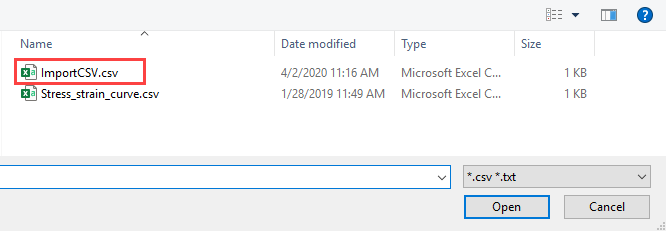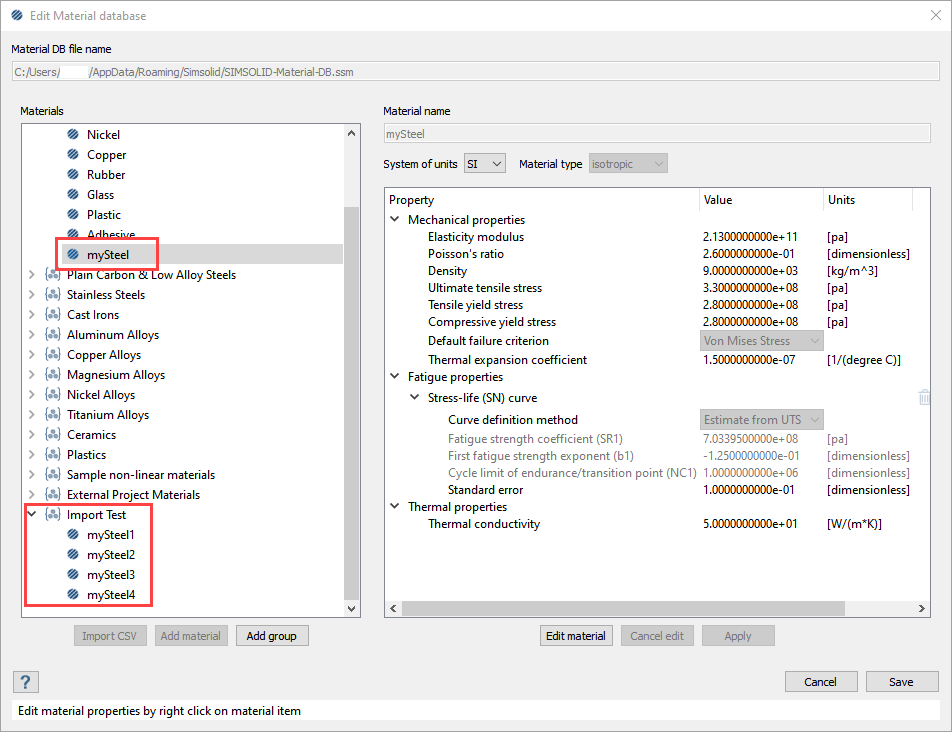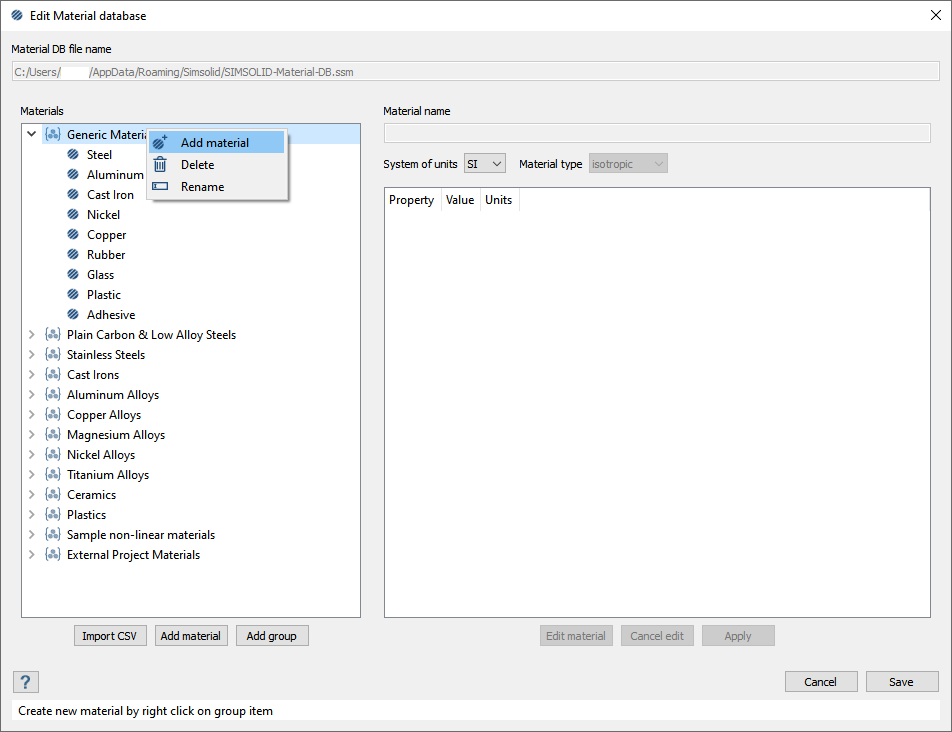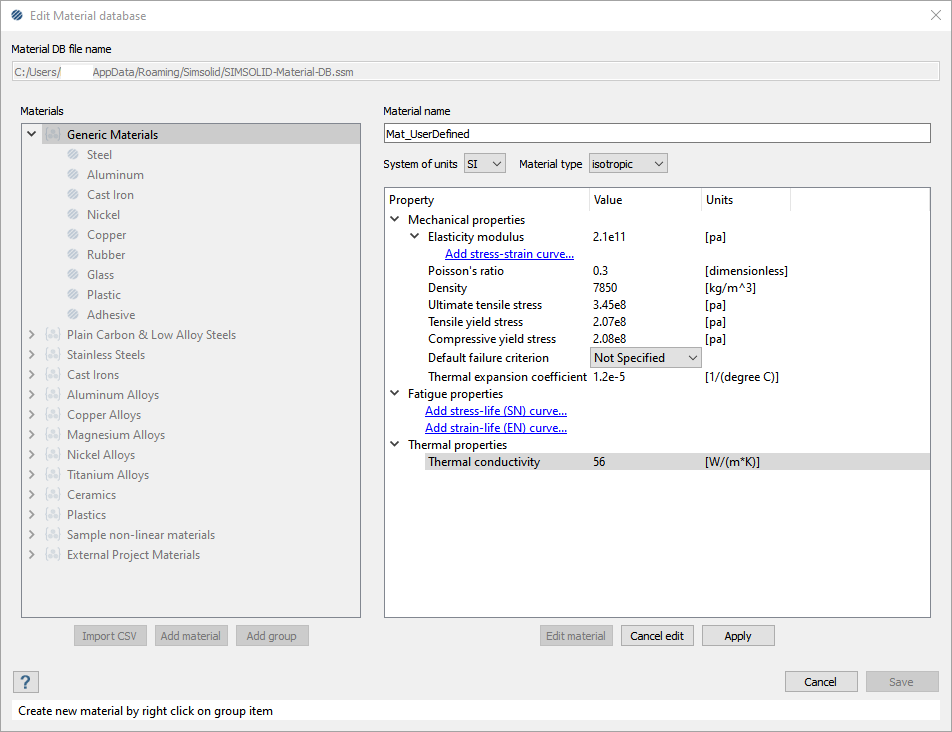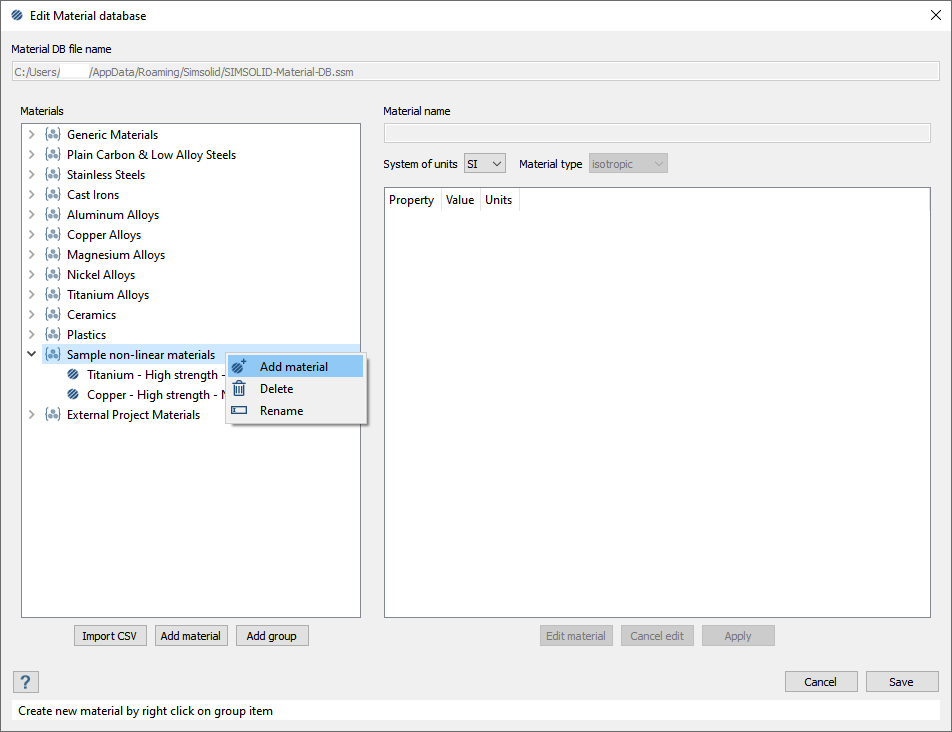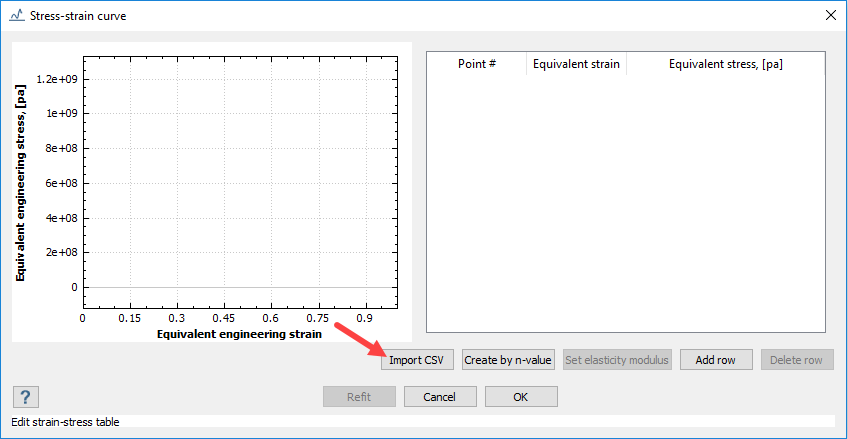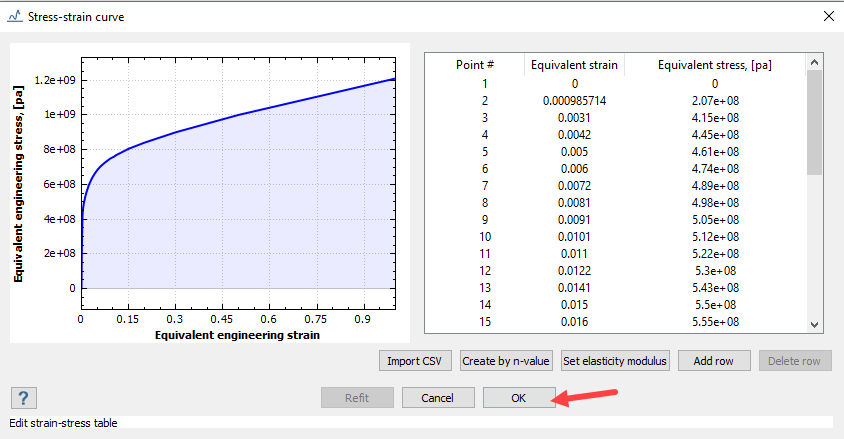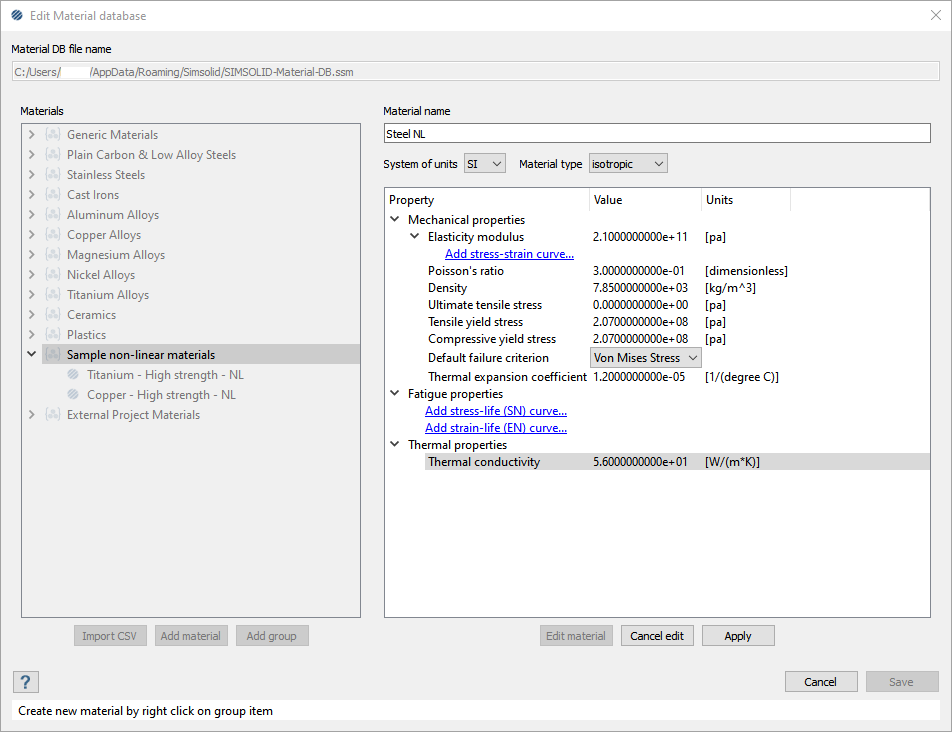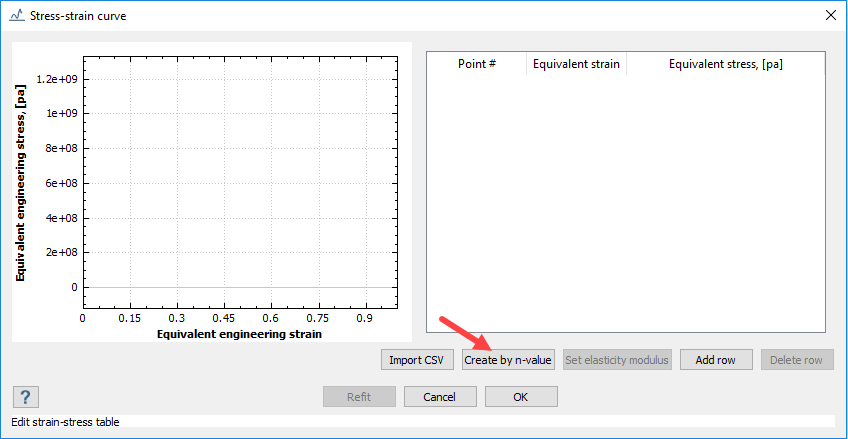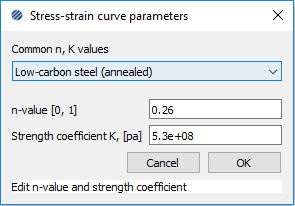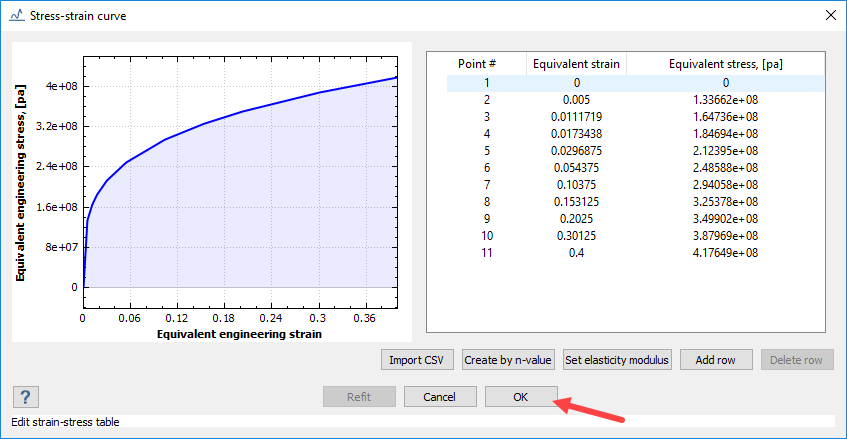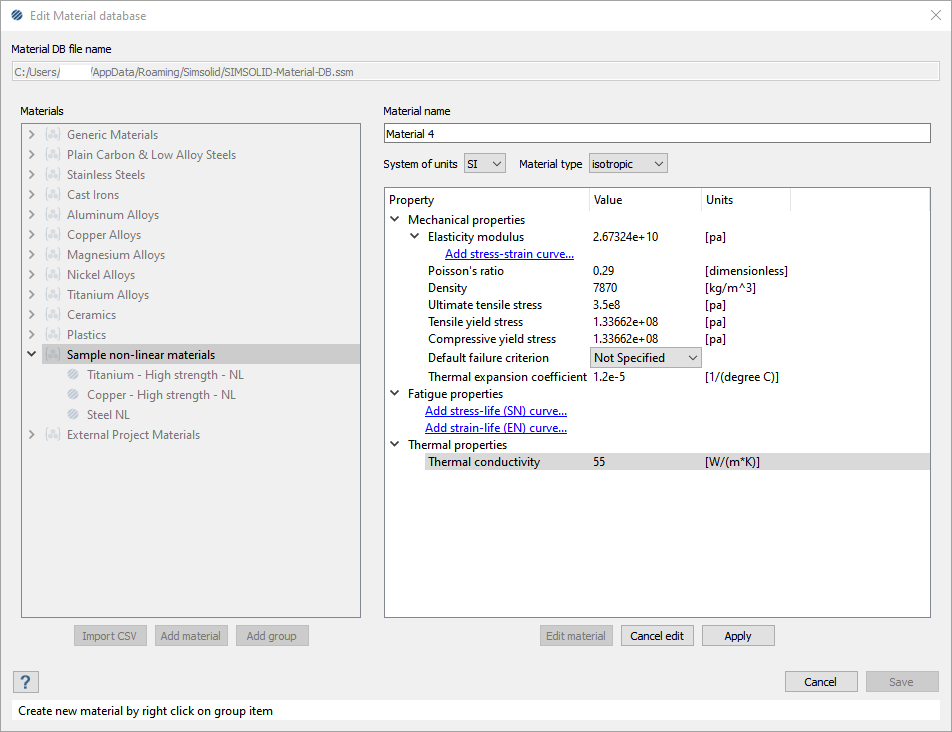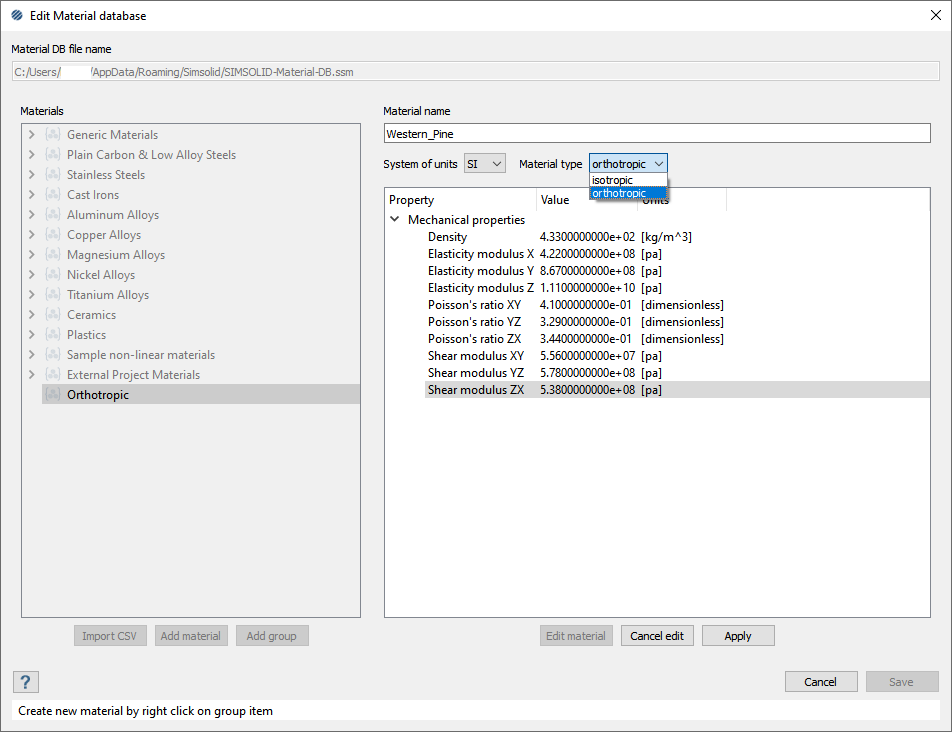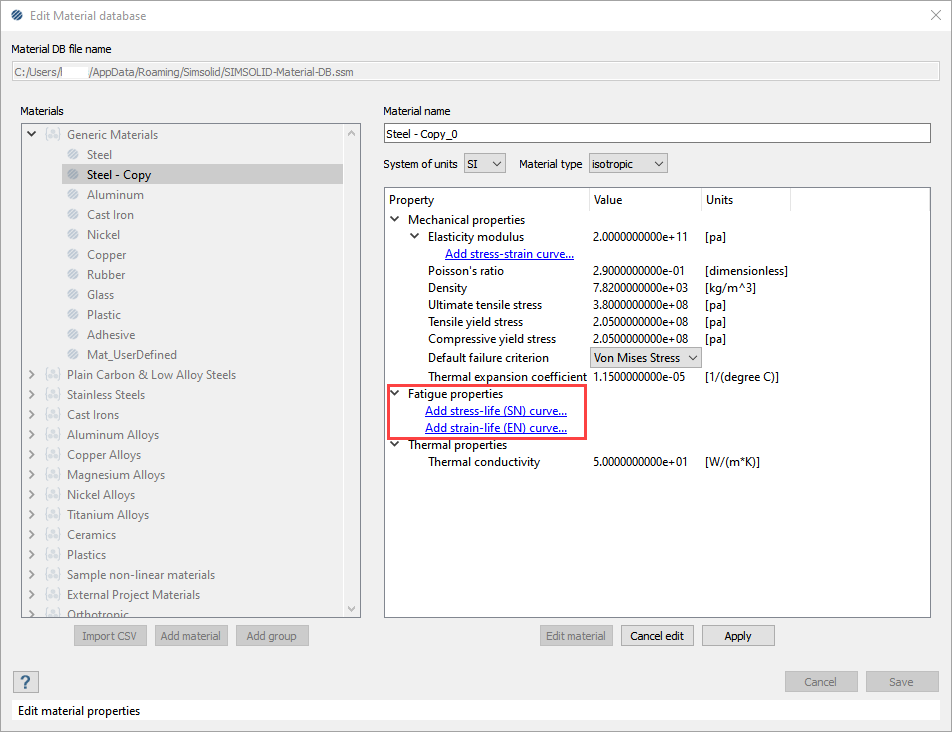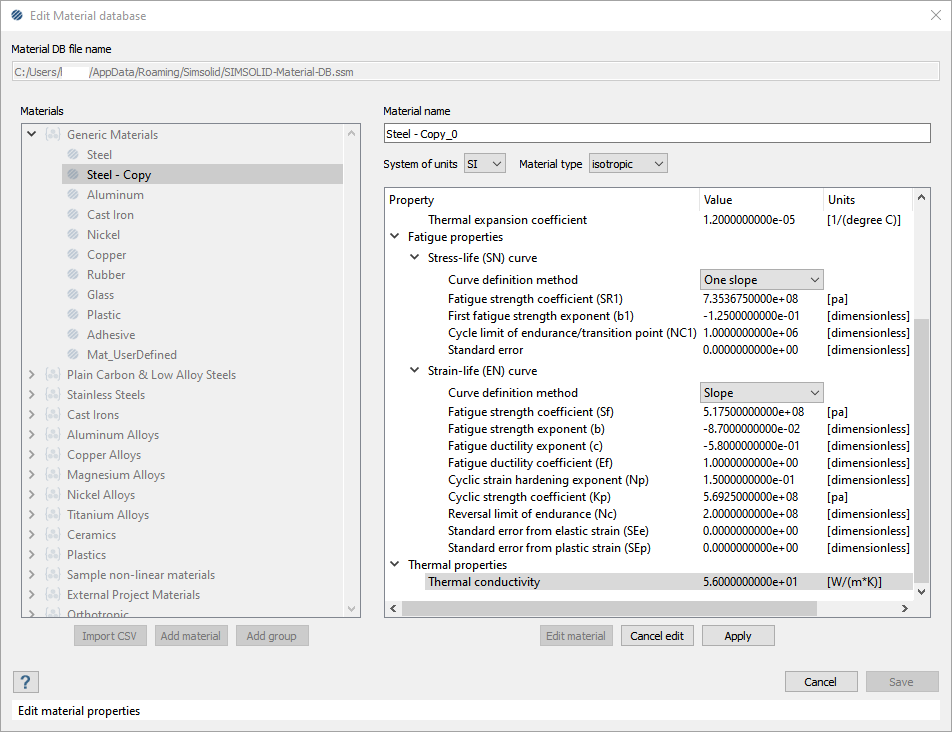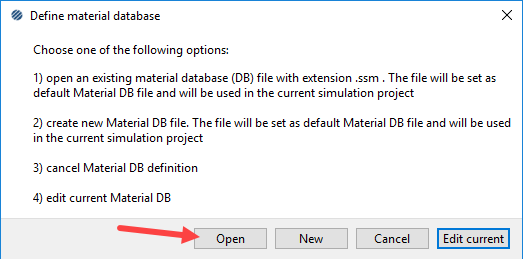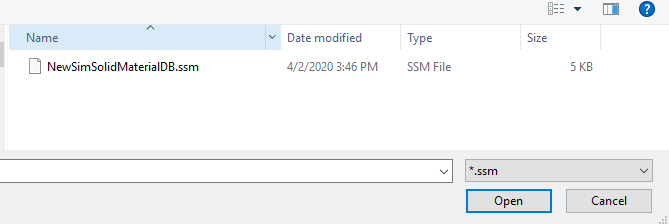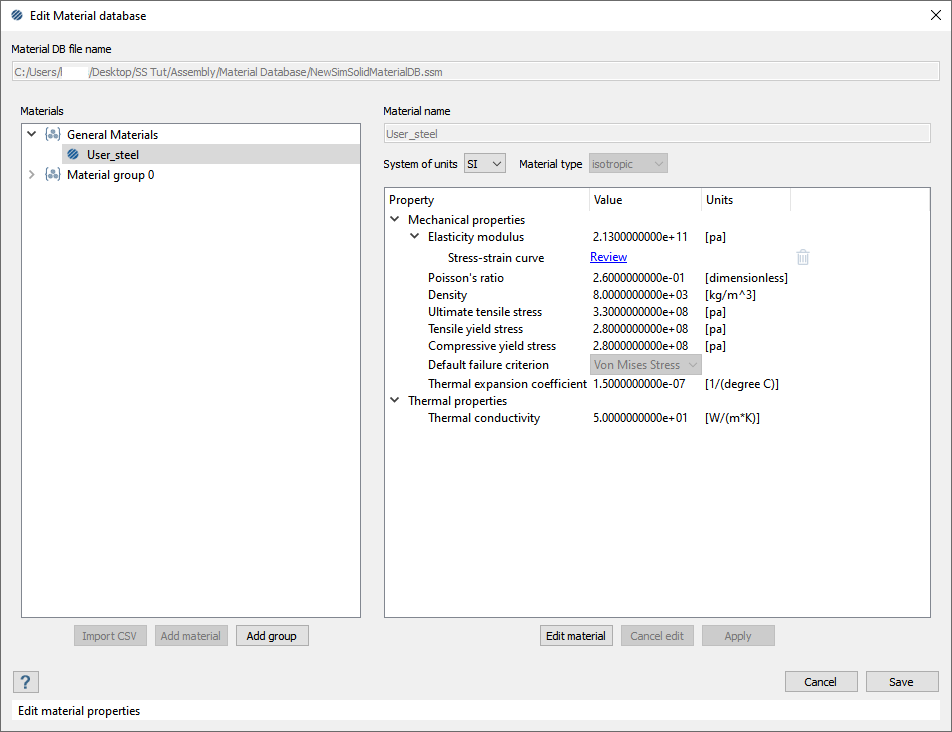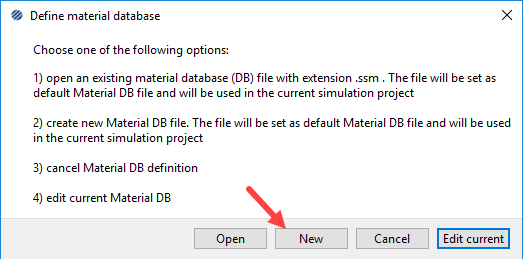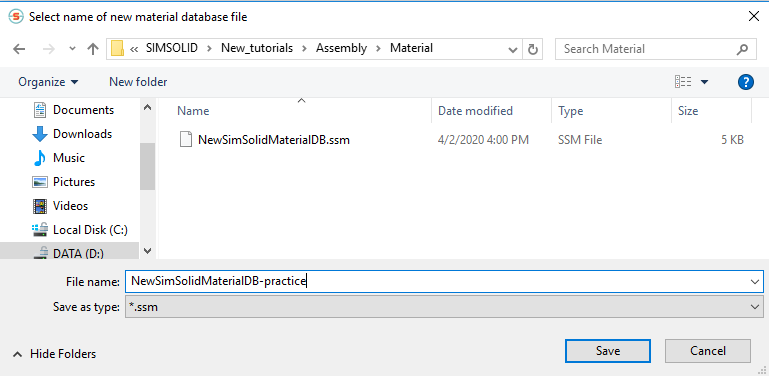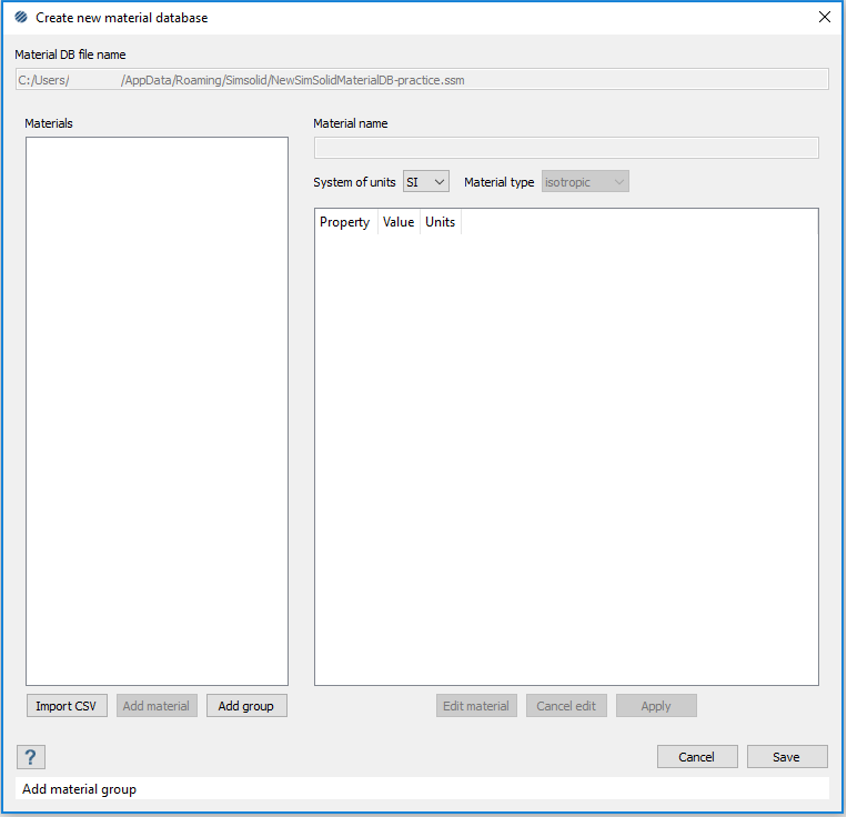Material Database
Use Material Databases in SimSolid.
Purpose
- Learn how to edit the SimSolid Database.
- Add Material using CSV import.
- Add Material using the context menu.
- Add Non-Linear Material using stress strain curve defined by n-k values.
- Add an orthotropic material.
- Add fatigue properties to an existing material.
- Open the Material Database.
- Create a new SimSolid Material Database.
Model Description
- ImportCSV.csv
- Stress_strain_curve.csv
- NewSimSolidMaterialDB.ssm
Import Material from CSV
Add material to the SimSolid Material Database by importing from a CSV file.
Add Material from Context Menu
Add material to the SimSolid Material Database using the context menu.
Add Non-Linear Material with Stress Strain Curve - Import from CSV
Add non-linear material to the SimSolid Material Database by importing a CSV file.
Add Non-Linear Material with Stress Strain Curve - Create by n-values
Add non-linear material to the SimSolid Material Database with stress-strain curve created from n-values.
Create Orthotropic Material
Add an orthotropic material to the material database.
Add Fatigue Curves
Edit existing materials to add fatigue curves.
Open Material Database
Open a new SimSolid Material Database.
Add Material Database
Add a new SimSolid Material Database.
